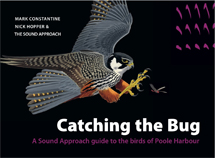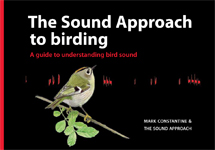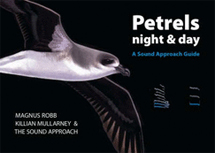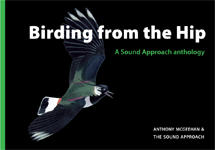An unusual Hume's Yellow-browed Warbler on the Isles of Scilly October 2012
On 15 October 2012 I was standing in the 'dump clump' on the edge of Lower Moors, St Mary’s, Isles of Scilly when I could hear an unusual call. It sounded like a Chiffchaff ‘sweet’ call but harsher and faster. As I waited, the bird came into view, a Yellow-browed Warbler spp.
From my knowledge of the literature and sound recordings, I judged that this sounded much like a Hume’s Yellow-browed Warbler (Phylloscopus humei). I then played a CD recording of Hume’s to it (from Hannu Jannes’ ‘Eastern Vagrants’). The bird responded immediately and flew right towards me, landing a few feet above my head calling frequently. To my ears, the call was identical to ‘call 2’ for Hume’s on the CD. Fascinating. However, the bird looked like a Yellow-browed (P.inornatus) although the underparts looked duller white. My initial views suggested that the tertial edges, face pattern and median covert bar might be a little less striking than on inornatus but it was the call that was so intriguing - it was lower pitched and unlike the calls of inornatus Yellow-browed. The call was surely a Hume’s…
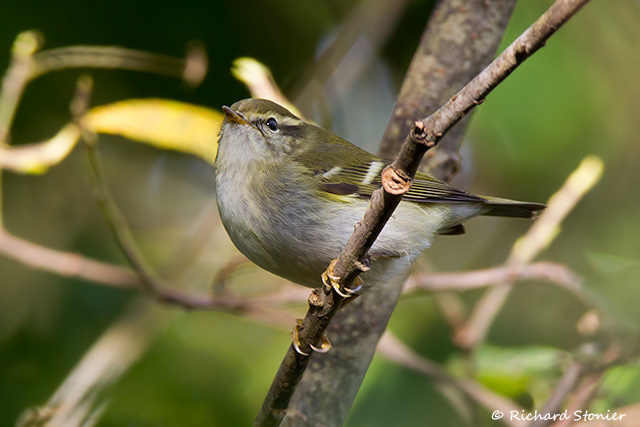
I alerted Ian Barnard who had just arrived nearby and been startled to hear my Humes CD playing. I explained what I had encountered and then the Hume’s called above us, again giving an identical call to the CD. Following brief views it was 1.5 hours before the bird reappeared, by which time I had alerted other birders. Over the ensuing days the bird continued to call, giving that same Chiffchaff-like call that is known from Hume’s on their wintering grounds. After some time, it was also heard to give a disyllabic call. At no time was any normal inornatus-like call heard. To keep the debate going, better field views showed that it looked slightly different to many inornatus Yellow-broweds.
Nick Hopper was also present on St.Mary’s, and although he didn’t have his normal recording equipment with him, he still managed to capture some useful sound recordings during this bird’s stay. Nick has kindly made some of these recording available and you can hear them below.
Nick also sent the recordings to Magnus Robb from the Sound Approach team. Despite Nick not having his normal equipment for the recording, Magnus was still able to make some sonograms from them, and they are reproduced here, along with Magnus’ comments.
"The bird in the recording is not a straightforward one to identify. It is not giving classic disyllabic calls of either Hume's or Yellow-browed Warbler. In fact two call types can be heard in the recording, a rising 'veest' and a more complex call that dips in the middle, at a frequency range that fits either species. Both species can give 'veest' calls. Yellow-browed typically does one as the last call in a series of normal calls, and its 'veest' is very high-pitched."

"The Sound Approach has three recordings of 'veest' calls of Hume's and they reach a maximum of around 7 kHz, the same as in the recording, and lower than our examples of Yellow-browed. The second call-type in the recording does not match any in our collection. However, Hume's is by far the more variable caller of the two, so this seems likely to be a variant we simply haven't come across yet. I don't think it is necessary to invoke mandelli. My understanding is that mandellii is not a long-distance migrant, and the only sonagrams I have seen didn't match either of the two call types in the recording anyway. In summary, the 'veest' calls point to Hume's and the other call type is a mystery."
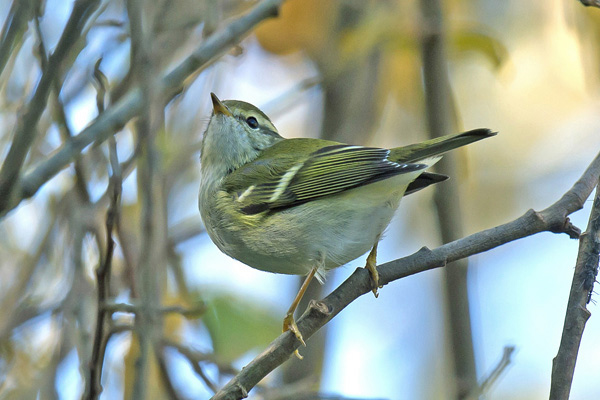
I am indebted to Nick Hopper and Magnus Robb of the Sound Approach for their help. It certainly furthers (but maybe does not clarify) the debate on what Hume’s Yellow-browed Warbler and Yellow-browed Warbler look and sound like.
Tim Vaughan
November 2012


